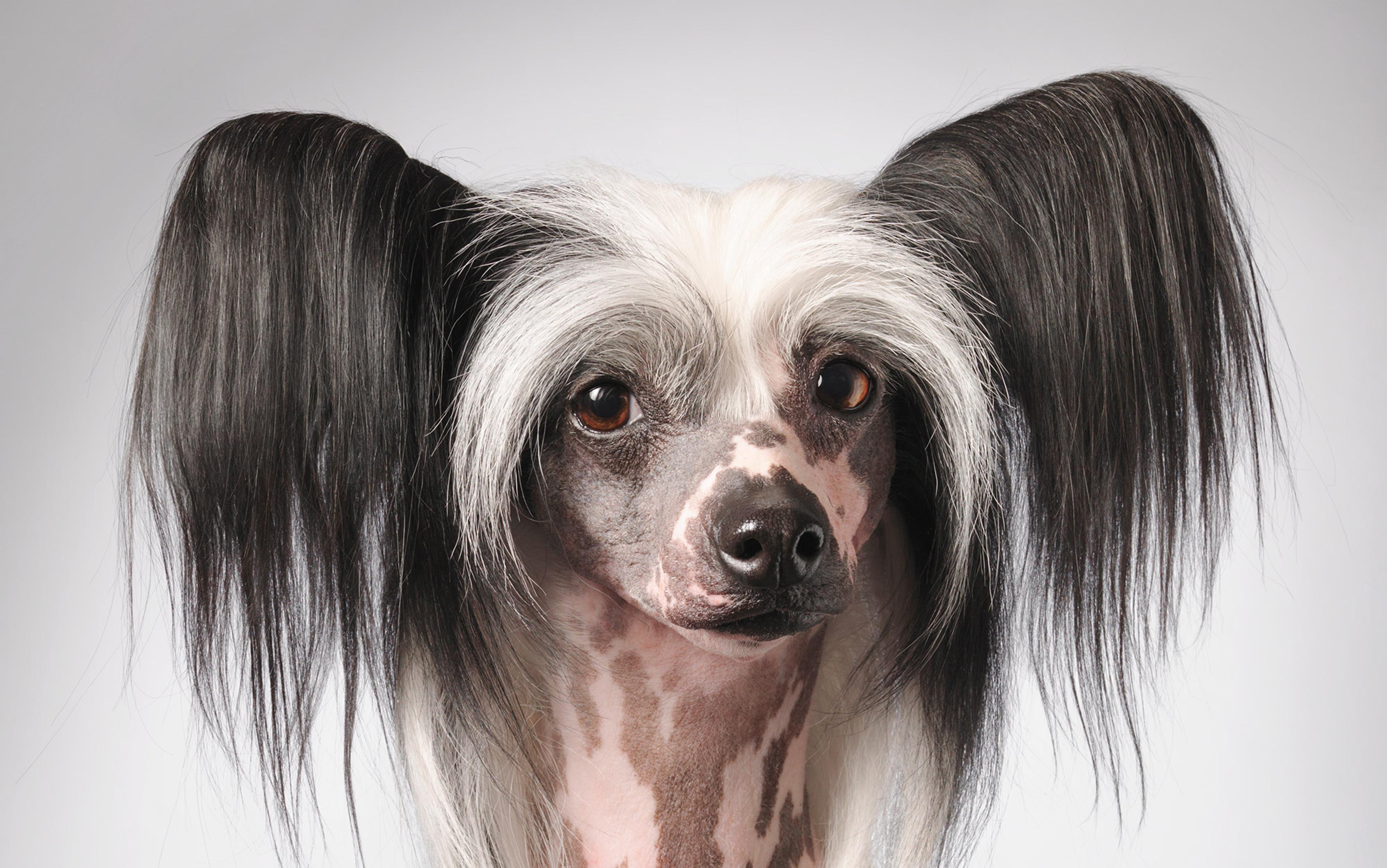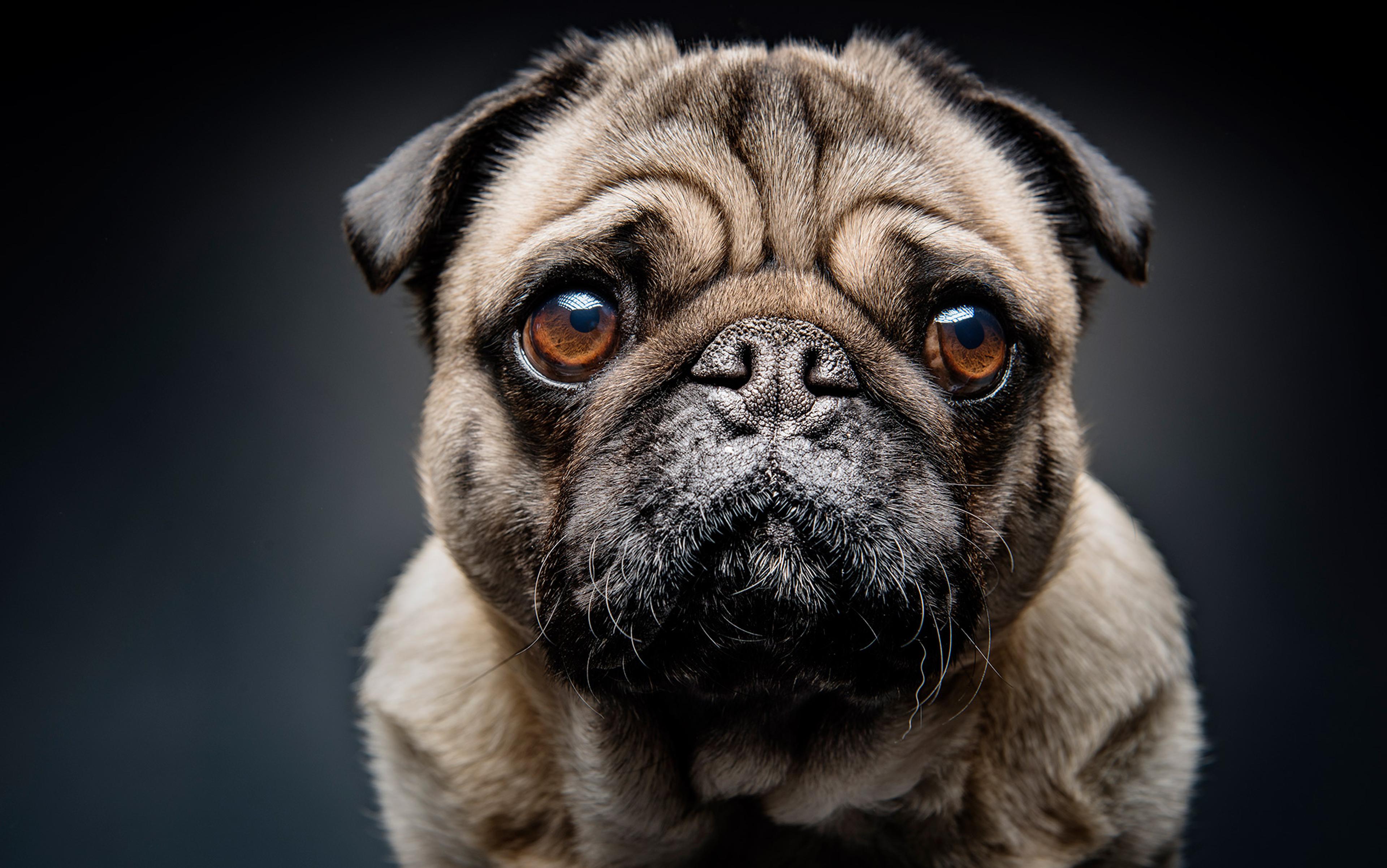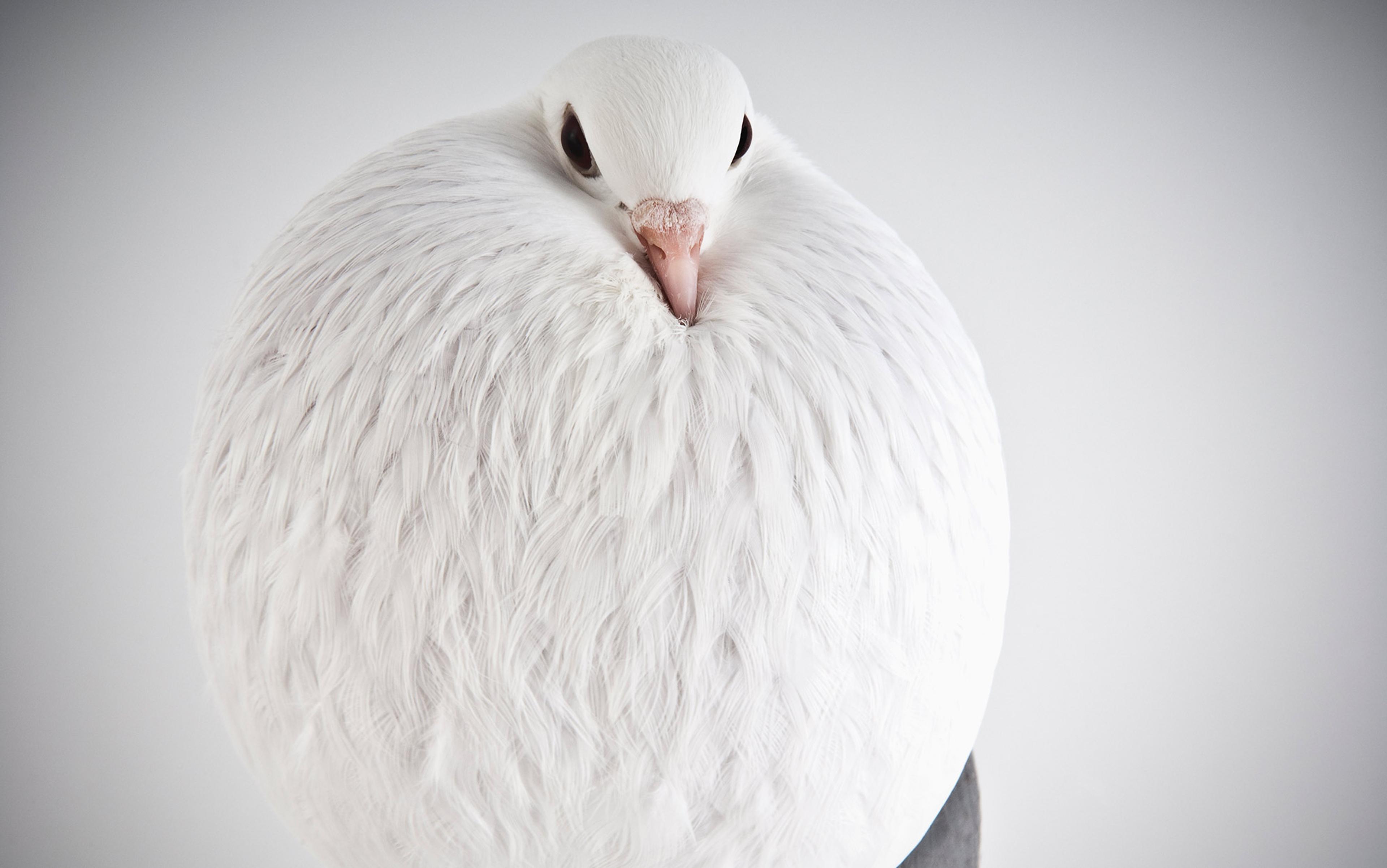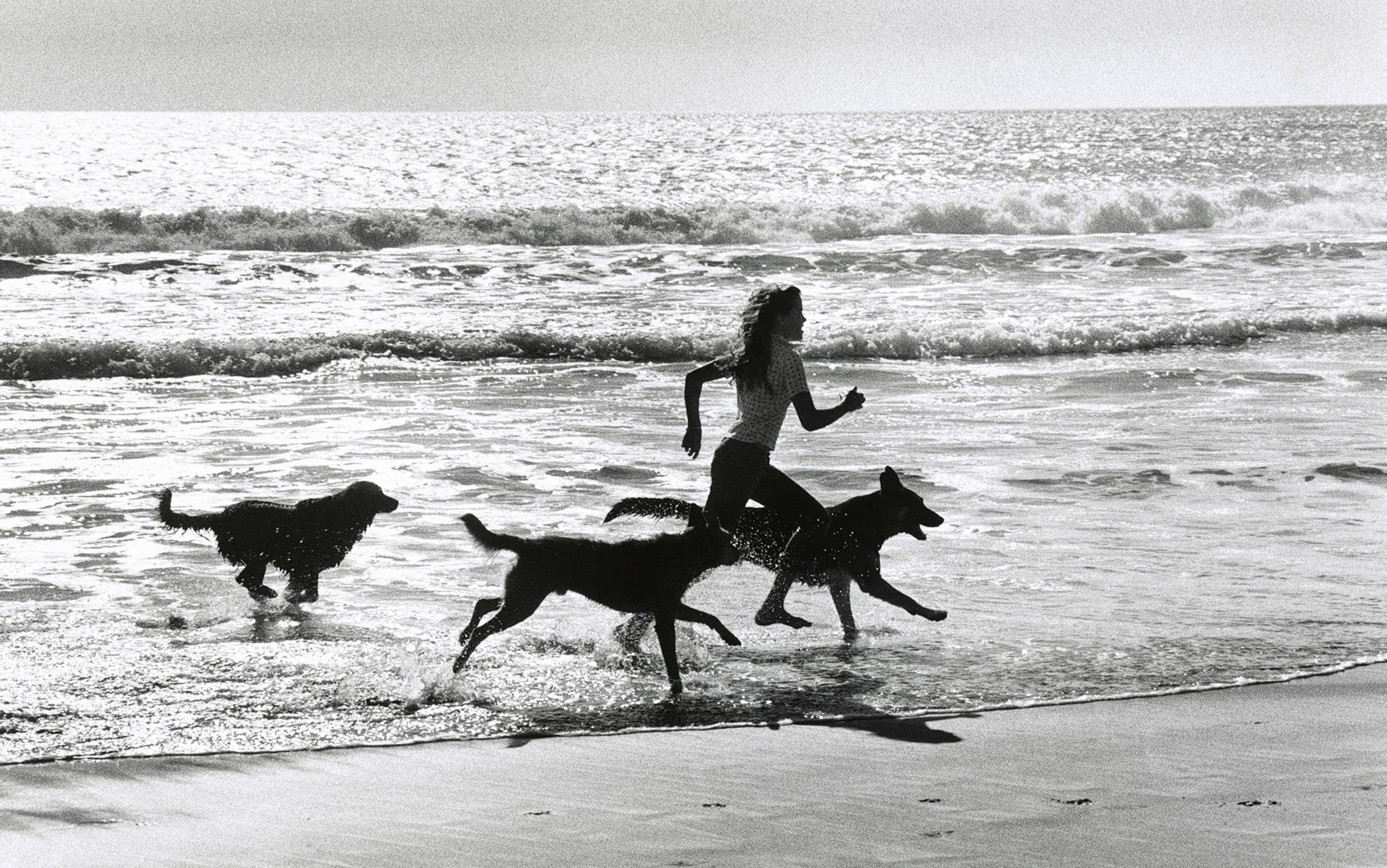Among the reeds and roots of India’s flooded rice paddies lives a small, freshwater fish. It is covered, face to fin, in horizontal black-and-white stripes, giving the minnow its name: the zebrafish. The fish are striking — and hardy — which has made them popular pets. Over the decades, the fish have spread beyond the shallow, silty waters of the Indian subcontinent to show off their racing stripes in living rooms around the world.
But today, these fish — at least, the original, black-and-white model popular among generations of aquarium keepers — are beginning to seem like relics from a simpler, bygone era. Thanks to biotechnology, the zebrafish has gotten a modern, Technicolor upgrade. By plucking pieces of DNA from jellyfish, sea coral and sea anemones, and popping them into the tiny, tropical fish, biologists have created zebrafish that glow in electric shades of red, orange, green, blue, and purple. In late 2003, a small Texas company called Yorktown Technologies began selling these animals, which they dubbed GloFish. They became America’s first genetically engineered pets.
GloFish are now available at pet stores throughout 49 American states (all but California), selling for $5 or $6 a pop. Two years ago, I bought six of them, along with a special tank designed to bring out their vibrant colours. I was enchanted, watching the fish dart around the aquarium in a neon blaze. But I also found myself confronting some thorny ethical and philosophical questions.
GloFish are not the first animals that we’ve modified for our own aesthetic pleasure, but the fish mark the beginning of a new age, one in which we can directly manipulate the genomes of our creature companions to make them more alluring. Now that biotechnology is giving us new ways to reshape animals, it’s critical that we stop to think through our long history of animal alteration and to consider: what makes an animal attractive? And how far should we allow ourselves to go in the pursuit of animal beauty?
Over the course of history, we have often treated animals as raw material, mounds of clay that can be sculpted and shaped into whatever forms suited our own needs. In many respects, the domestic dog is our masterpiece. Starting with the gray wolf, and using nothing more than selective breeding, we created a whole new universe of creatures. Among the 400 or so dog breeds that exist today, there are canines with round, floppy ears (the basset hound) and pointed, erect ones (the German shepherd); dogs with smooth, silky coats (Afghan hounds) and rough, wiry ones (Airedale terriers); pooches with long, graceful legs (the Italian greyhound) and short, stubby ones (the corgi). Thanks to our careful breeding, the dog is now the most morphologically diverse species on Earth.
The explosion of dog types and characteristics was initially fuelled by the search for differentiated dogs that excelled at one specific task, whether it was hunting, herding, or guarding. That began to change in the late 19th century, with the birth of kennel clubs and the rise of dog shows. Sewallis Shirley, who established the world’s first kennel club in Britain in 1873, was a wealthy British aristocrat who kept hounds and gun dogs and used them to hunt. But the dog organisation he founded, and the ones that followed, helped turn dogs from working animals into ornaments. Kennel clubs, which were established to help standardise the hodgepodge of existing breeds and keep track of canine pedigrees, also helped to organise canine competitions. Some of these events, such as field trials, were tests of a dog’s ability to perform a certain job, but the most prestigious and popular contests were ‘conformational shows’, in which individual dogs were judged based on how closely they matched the idealised versions of their breeds. Critically, these breed standards, which are set by individual breed clubs in conjunction with kennel clubs, were – and are – based not on how well a dog rounds up sheep or retrieves dead birds but on the animal’s physical appearance.
Some of our canine preferences seem utterly arbitrary, but others reflect a deep-seated attraction to creatures with ‘neotenic’, or juvenile-looking, features
The establishment of breed standards that focused purely on looks meant that championship dogs no longer needed to be capable of performing the tasks for which they were bred. Instead, they merely needed to look the part. Dog shows are like the Miss America pageant without the talent competition. Or the interview. Or the evening wear. It’s all swimsuits, all the time.
Consider the poodle. The breed, which originated in Germany, was once cherished by hunters for its swimming and retrieving prowess. But the show criteria make no mention of these skills. Instead, to the American Kennel Club (AKC), the perfect poodle has a well-defined chin and flat cheekbones. He has thickly feathered ears and dark, oval eyes. His small feet have well-arched toes and short nails. His tail is straight and short, carried high over his body and never, god forbid, curled.
And that’s not all. To rise to the top of the pack, a poodle must be painstakingly groomed, his face, throat and feet shaved to the skin, with puffy pompons of hair adorning the legs, hips, and tail. He should appear ‘elegant’ and carry himself ‘proudly’ with ‘an air of distinction and dignity peculiar to himself’. The poodle is no longer a working dog — he’s eye candy.
The same is true of many other dog breeds: a labrador retriever could be the best bird dog in the world, the most loving companion, the healthiest canine, and yet, he’d be penalised in the show ring if he had black eyes, which are ‘undesirable’ because they ‘give a harsh expression’, according to the AKC.
Some of our canine preferences seem utterly arbitrary, but others reflect a deep-seated attraction to creatures with ‘neotenic’, or juvenile-looking, features. The young of many species look similar, with their large heads, big eyes, round foreheads, and snub noses. We have a natural affinity for these traits, thanks to evolution, which has equipped us to find human babies irresistible. Some evolutionary biologists have gone so far as to suggest that neotenic animals — such as puppies and kittens — are actually hijacking our innate attraction to infants, tapping into our natural parental instincts and tricking us into caring for them. This ‘cute response’ might have helped spur the creation of toy dog breeds and explain why we’ve pushed some breeds to have bigger heads and eyes, and shorter muzzles. More recently, our love of all things neotenic might be responsible for the development of dwarf cats or tiny teacup-sized pigs. (And also, perhaps, the proliferation of videos and pictures of adorable animals on the internet.)
Apart from neoteny, the breeding of aesthetic companion animals has been driven by a different impulse — the human appetite for novelty. We are drawn to creatures that are new, unusual, and rare. Throughout history, rich and powerful families have kept exotic pets, and some celebrities still do. Of course, we can’t all invite lions, tigers and bears into our homes, so breeders have found ways to create pets that seem exotic, such as the ‘toyger’, a housecat that’s been bred to look like a tiger.
The ornamental fish industry, in particular, is engaged in a constant arms race to provide fish fanciers with ever more unusual specimens. That’s how the now ubiquitous goldfish began its life. The goldfish, which is native to China, is usually a silvery gray in the wild; the yellow-orange hue is a rare, natural variation. Fishermen spotted these rare golden mutants and, by the 13th century, they had become popular pets for wealthy Chinese families, who kept the fish in private, outdoor ponds.
However, over the next several centuries, earthenware vessels became widely available, allowing fish fanciers to keep their pets indoors, and making fish-keeping possible even for those who were not privileged enough to have their own ponds. As goldfish became more popular — first in China and Asia, and then further afield — breeders created an endless array of new varieties. First came new colours, including a white goldfish and one with a black-and-white tortoiseshell pattern splashed across its back. Then breeders began to reshape the animals’ bodies, creating goldfish with double, triple, or even quadruple tails; some with bulbous, protruding or upturned eyes; and others with large hoods, helmets, or crests (essentially, fleshy growths) perched atop their heads.
Many will recoil at the sight of a purple poodle, and one man’s beloved hairless dog is another’s supremely ugly duckling
Fish fanciers in North America and Europe began importing exotic specimens and using them as starting points for further experiments, breeding them together in various combinations to create new kinds of fish. For instance, even after the ‘natural’ neon tetra became a huge hit in the pet industry in the mid-20th century, breeders tinkered with it, creating an albino version, and one with long, feathery fins, among others. Today, your pet store’s aquarium display contains all sorts of fish that simply don’t exist in the wild, all of them created in the quest for increasingly fantastical pets.
The pursuit of novelty has spurred a similar explosion of types in other pet species as well. In 1850, for instance, there were 10 different rabbit breeds. Today, there are close to 50, which come in a range of colours, sizes, ear shapes, and fur lengths. Bird lovers can now buy canaries with frilled or crested feathers, or corn snakes that come in so many different shades and patterns (with names such as candycane, sunkissed, lavender, zizag, creamsicle, bubblegum snow, and more) that they could be mistaken for jewellery.
It’s no accident that many of these newly created varieties involve colour morphs; research has shown that we’re drawn to brightly coloured animals. For instance, a study at the University of Washington, Bothell, in 2007 showed that we prefer penguin species that feature a dash of red or yellow on their bodies to those that are merely black and white. Perhaps this is why canaries, which are a dull greenish-yellow in the wild, now come in more than 50 different colour combinations. This bias toward saturated and warm hues might be another reason why Chinese fishermen initially plucked those golden mutants out of the river.
When selective breeding just won’t get the job done, there’s always the miracle of modern chemistry: each spring some enterprising poultry farmers dye newborn chicks Day-Glo pink, purple, green, and blue as part of a push to market the fuzzy little creatures as Easter gifts. (The dye is sprayed onto the birds or injected into the eggs before they hatch.) Long before GloFish came along, pet stores were selling ‘painted’ fish, which were dipped in or injected with neon pigments. And Fluffy and Fido can now have their coats turned into painterly palettes during a routine trip to the groomer. Last year the British actress Emma Watson was spotted walking a pink bichon frise. Meanwhile, in China, the craze seems to be for dyeing pet dogs to look like more exotic animals, such as tigers and pandas.
None of this is to say that we all share the same tastes when it comes to our creature companions. Many will recoil at the sight of a purple poodle, and one man’s beloved hairless dog is another’s supremely ugly duckling. But whatever our individual tastes, we have, as a society, turned animals into aesthetic objects, into products to be fetishised and possessed. Indeed, owning an attractive animal satisfies the same urges and desires as acquiring other beautiful objects, such as art, jewellery, or designer clothes and exotic and beautiful animals are ‘used,’ says American sociologist Bonnie Berry in a 2008 paper, ‘as consumer products to enhance human status’.
As we moved from an agrarian society into a modern, industrialised one, it became less and less common for the animals we owned to serve in working roles. Instead, animals became companions and ornaments, and function took a backseat to form. Over time, what once was merely a luxury for the rich and powerful became a democratic commodity: the highly aesthetic, sometimes fanciful, companion animal.
The trouble is that in our quest to create alluring animals, we sometimes inflict great damage. Even simple selective breeding can have calamitous effects. Purebred dogs are the classic example. Once conformational dog shows became the arbiters of breed standards, we began to exaggerate the canine form: if dog show judges ruled that a bulldog with a large head and a shortened muzzle was good, then surely a bigger head and a flatter face would be even better. Over time, we selected for increasingly extreme versions of a breed’s idealised traits. And because these dogs didn’t need to perform any real tasks, there was no need to make sure they were physically sound. Today, bulldog puppies have heads so huge that they can’t fit through the birth canal — most are delivered via Caesarean section — and their faces are so squashed that they have trouble simply breathing.
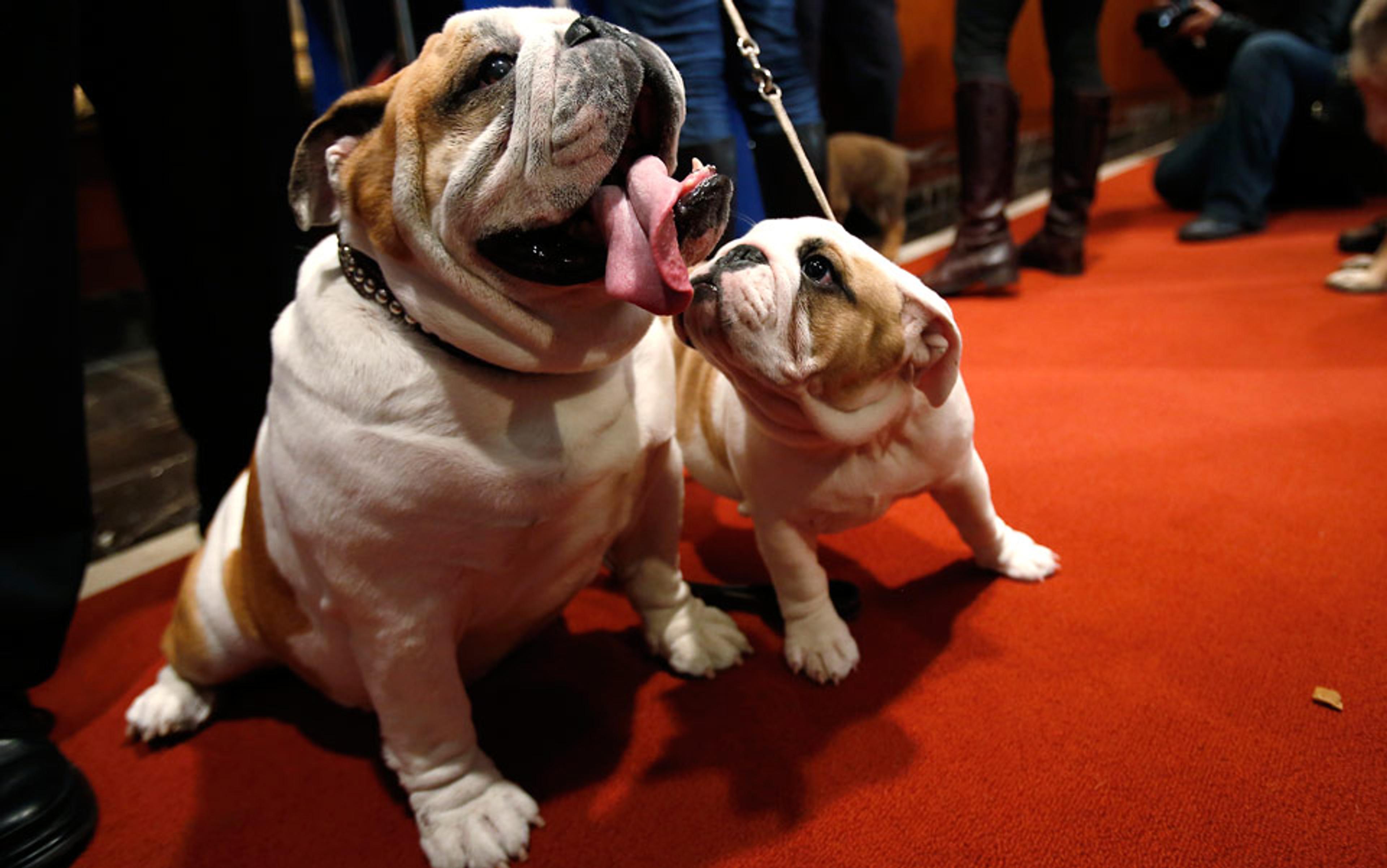
Dominique, a 14-week-old Bulldog, looks up at Munch, a 7-year-old Bulldog, at the American Kennel Club’s announcement that the bulldog was now the fifth most popular breed in the USA in 2012. Photo by Carlo Allegri/Reuters
The bulldog might be an extreme case, but many of the canine traits valued by breeders and dog show judges come with serious welfare costs. A 2009 paper in The Veterinary Journal concluded that ‘every one of the 50 most popular pedigree-dog breeds has at least one aspect of its physical conformation that predisposes it to a disorder’. According to the AKC, the pug’s tail, for instance, should be ‘curled as tightly as possible over the hip. The double curl is perfection.’ But this corkscrew tail can be accompanied by a twisted spine, which can cause severe pain or even paralysis. A dachshund’s elongated back can also predispose the dog to spinal problems, while the skin folds on a shar pei’s wrinkled face can trap bacteria and leave the breed susceptible to serious infection. The list goes on and on.
There is a long history of cosmetic tail docking in horses, as well as tail ‘nicking’, in which a horse’s tail tendon is cut, causing the equine to carry its tail higher
These kinds of conformational problems aren’t limited to dogs. Pet birds with unusual tufts of feathers are prone to feather cysts and can find it difficult to fly or regulate their own body temperatures. And in some kinds of goldfish, guppies, and angelfish, long, ornate tails impair movement and make reproduction difficult. Goldfish with fleshy growths on their heads (the ‘helmets’, ‘caps’, or ‘crests’, valued by some collectors), or ‘telescope’ or ‘bubble’ eyes, can be nearly blind. In fact, in his 1868 treatise on domesticated plants and animals, Charles Darwin noted that ‘many of the varieties’ of goldfish ‘ought to be called monstrosities’.
Our obsession with appearances can spur even more extreme action, such as subjecting pets to painful cosmetic surgery. It’s long been standard practice to ‘dock’ or amputate the tails of dogs in many breeds, including boxers, cocker spaniels, and dobermans. The procedure, performed on puppies, is often done without anaesthesia. Some claim that tail docking helps to protect dogs’ tails from injury and infection as they race through brush or work in the fields, but there’s not much evidence to support this argument.
As the American Veterinary Medical Association, which opposes tail docking, states on its website: ‘The only benefit that appears to be derived from cosmetic tail docking of dogs is the owner’s impression of a pleasing appearance.’ Tail docking was banned in the UK in 2007 (with some exceptions for certain working breeds), and it is banned in Australia, parts of Canada, and much of Europe — but the practice remains common in the US. There is also a long history of cosmetic tail docking in horses, as well as tail ‘nicking’, in which a horse’s tail tendon is cut, causing the equine to carry its tail higher, in what some consider to be a more pleasing manner. Both procedures have been illegal in the UK since 1949, and docking is banned in 11 US states.
There are other surgical fixes for a pet’s supposed physical defects, too. If Rover’s ears flop over, instead of standing upright to attention as some breed standards stipulate, you can outfit him with a set of plastic and mesh ear implants. And in 2009 a dog shelter in the UK sent two chocolate labradors to have breast reductions — the dogs had sagging mammary glands after being overused for breeding — in order to make them more attractive to potential owners.
As radical as surgery and selective breeding can be, however, they’re nothing compared with our modern biotechnological tools. Molecular biology can re-engineer animal bodies in profound new ways — and could allow us to push our aesthetic preferences to new, sci-fi-like extremes.
Today, biotechnology has given us more power than ever to reshape other species. Genetic engineering allows us to extract new value from animal bodies, whether we’re creating pigs that have organs more suitable for transplantation into humans, or goats that make lifesaving pharmaceuticals in their milk. So perhaps it was inevitable that we would figure out how to use our modern genetic tools to imbue animals with a new and purely aesthetic value.
GloFish are manmade creatures, but they are possible because some marine animals — including jellyfish, sea anemones, and sea coral — are naturally luminescent. These creatures manufacture their own fluorescent proteins, and in the 1990s, scientists learned how to take the genes that code for these proteins and insert them into other organisms. Using a technique known as microinjection, a biologist can squirt a fluorescence gene directly into, for instance, a zebrafish embryo. In some embryos, this gene will manage to insinuate itself into the fish’s own genome, and the zebrafish that develops will churn out its own fluorescent proteins — and therefore glow. What’s more, the fish will pass these foreign genes on to their offspring, so you only need a few neon adults to create a whole pond-full of shimmering swimmers.
Fluorescent zebrafish — first created by scientists in the 1990s — were not initially intended to be just pretty pets. One researcher engineered the colourful fish in the hope of eventually turning them into living pollution detectors. (The idea was to create a fish that would start to glow only when swimming in contaminated water.) Other scientists planned to use the fish as medical models in order to study development and disease. But when entrepreneurs caught sight of the incandescent animals, they realised that they might appeal to ornamental fish enthusiasts who are, after all, always on the lookout for the next big thing.
In late 2003, Yorktown Technologies started selling GloFish in the US. They launched with just one colour — the Starfire Red — but eventually added strains in Sunburst Orange, Electric Green, Cosmic Blue, and Galactic Purple, as well as a twinkling tetra. In Asia, there’s a Taiwanese company, Taikong, that sells genetically modified, fluorescent fish. These fish are not currently allowed on the market in Canada, Australia or Europe, but they’ve turned up — illegally — in aquariums in the UK and the Netherlands.
The fish are popular, and when I checked them out myself a few years ago in the animal supplies chain PetCo, it was easy to see why. They were pretty. They were widely available, and they weren’t expensive, making it possible for any fish-lover with a few bucks to own a piece of the biotechnological future. When I set up a miniature GloFish habitat in my own living room, I found the creatures dazzling.
In a world in which dogs are beaten, neglected, and forced into brutal fights, I find it difficult to get too worked up about some creative costuming
However, GloFish were not universally embraced. Some activists vigorously opposed the fish, raising several concerns about their sale. For example, the Center for Food Safety in Washington DC, which in January 2004 sued the Food and Drug Administration to block the sale of these pets, posed questions about what might happen if the fish escaped into the wild. The centre’s executive director called GloFish ‘biological pollution’ but independent experts eventually ruled that these fish posed virtually no environmental risk. One of the most common objections to the fish, however, was simple — that they were unnatural. Some opponents even claimed that viewing GloFish might cause ‘aesthetic injury’.
The ‘unnatural’ argument has been used to condemn all sorts of cosmetic modifications, from fantastical fish to dyed dogs. But we should not make the mistake of equating ‘unnatural’ with ‘unethical’. This fallacy — that what is natural is good and what is unnatural is bad — seems to be everywhere. After all, few of the pets we keep today could be called ‘natural’ — our dogs, cats, fish, and birds are products of years of human sculpting.
When meddling with animals, it’s not some fuzzy notion of what’s ‘natural’ that should give us pause — it’s the effects that our actions can have on a creature’s welfare. Animals might have become cosmetic commodities, but they are still living creatures capable of suffering. And so interfering in their lives — and re-engineering their bodies — involves balancing pain against gain. Yes, it might be horrible to amputate a dog’s leg, but if the procedure saves its life, then it may be a justifiable intervention. However, cosmetic procedures present a different calculus: it’s impossible to justify any amount of pain or suffering in the name of mere beauty. In deciding where to draw the line, our governing principle should be a simple four-word phrase familiar to doctors everywhere: first, do no harm.
This simple precept rules out barbaric procedures such as tail docking and nicking, as well as artificial selection for physical traits that cause handicaps and deformities. It also means we need to think seriously about animal dyeing. Some dyes and dyeing procedures are toxic, and even non-toxic ones can cause skin irritation or allergic reactions. The practice can also have indirect welfare effects: dyeing newborn chicks for Easter turns the birds into playthings that are almost sure to be abandoned, relinquished, or discarded when they become full grown, less cute chickens.
However, if entrepreneurs come up with an absolutely, demonstrably harmless dyeing procedure, I’m willing to give pet owners and breeders a little latitude to make their own aesthetic choices. The same goes for any other benign modification. If you want to bedeck your poodle with bows, or shape your Brussels Griffon’s hair into a Mohawk each morning (as a man in my neighborhood does), be my guest. In a world in which dogs are beaten, neglected, and forced into brutal fights, I find it difficult to get too worked up about some creative costuming. As James Serpell, the director of the Center for the Interaction of Animals and Society at the University of Pennsylvania, put it in a 2003 paper: ‘It is unlikely that dogs suffer to any appreciable extent from being dressed up like dolls or from being used by their owners as fashion accessories. One certainly could argue that these animals are diminished symbolically by such uses… But it is very doubtful whether the animals are aware of the symbolism or that they care.’
It doesn’t bother me that GloFish are ‘artificial’. What matters to me is that the intervention itself — one fluorescence gene injected into single-celled embryos, followed by simple breeding of the resulting fish — has no known ill effects on the animals. The fish seem to be healthy, and if evidence emerged to the contrary, I wouldn’t hesitate to change my position. As it stands, I find GloFish far less ethically troubling than the deformed and crippled goldfish we’ve created through such ‘low-tech’ methods as selective breeding.
GloFish might be the first products of modern biotechnology engineered entirely to be more visually appealing, but they likely won’t be the last. Scientists have already identified a number of specific genes that control coat colour, pattern, texture, and length in cats and dogs, and it’s not hard to imagine breeders and geneticists tinkering with these genes, perhaps creating pets with new combinations of traits (or even custom patterns on their backs). In the years to come, we might find ourselves tempted to make all sorts of genetic tweaks to our creature companions. But, in each case, we must ask ourselves: will this DNA-doctoring harm the animal — or, in instances in which the escape of genetically modified animals is a real possibility, its wild cousins — either directly or indirectly? If so, we should rule it out.
We should also take it upon ourselves to try to right some of the wrongs we’ve done in the name of beauty. The good news is that change is possible. More and more nations are outlawing tail docking and other forms of animal mutilation. And to its credit, the UK’s Kennel Club has amended a number of its breed standards to put more emphasis on canine health. In 2009, for instance, it revised its standard on the bulldog to note: ‘Dogs showing respiratory distress highly undesirable.’ It also said that the dogs should show ‘no tendency towards obesity’ and be ‘free from obvious eye problems’. Such changes are an important step forward, but there’s much more that could be done, and the AKC still lags behind.
Our final obligation is to be honest with — and about — ourselves. It’s not necessarily wrong to value an animal for its looks; aesthetics is just one way in which we imbue the natural world with value. But we should not deceive ourselves into thinking that we’re painting a dog’s nails because she likes it. We must acknowledge our aesthetic desires, and come to terms with the immense power we have over animal bodies. Only then can we begin to ensure a beautiful future for our beloved beasts.
